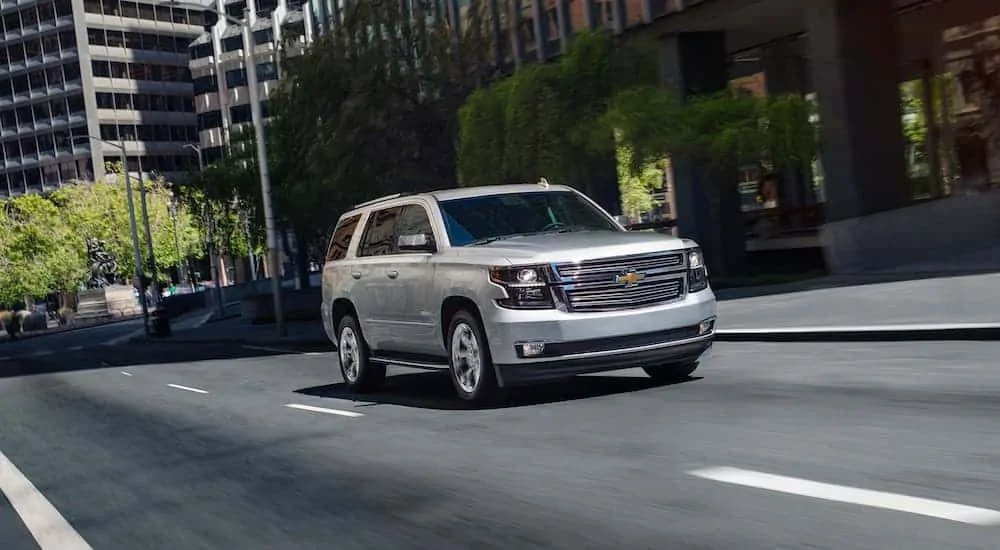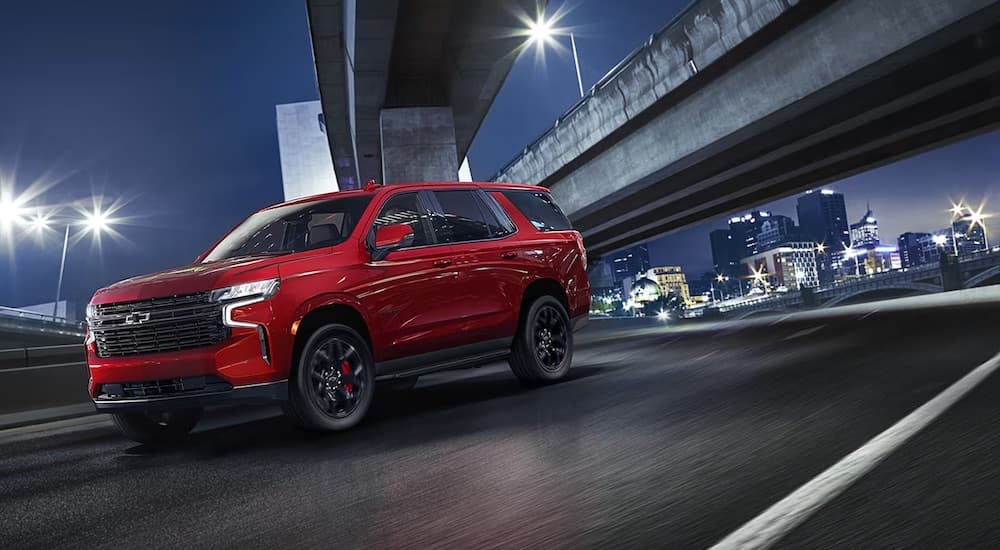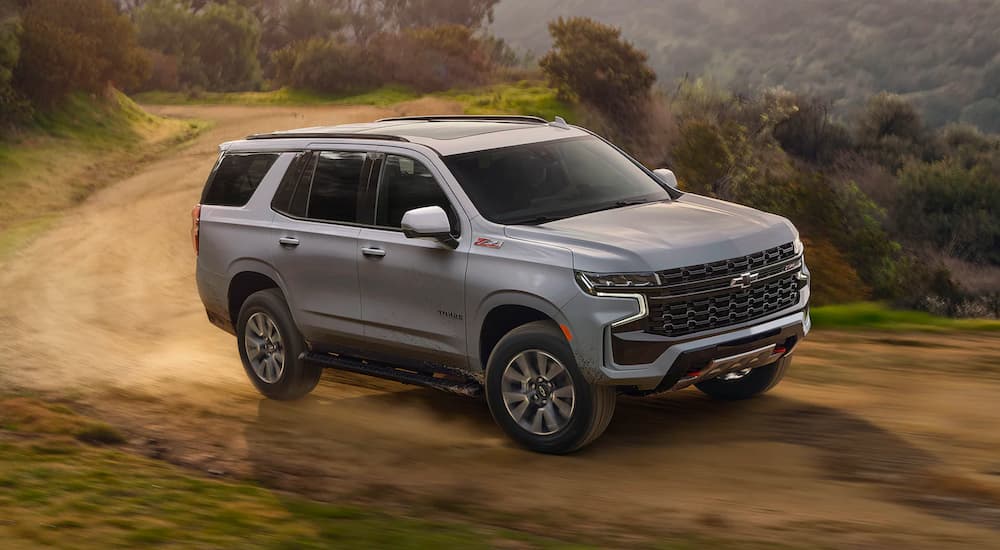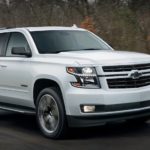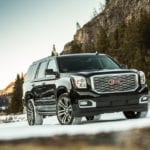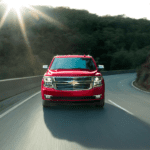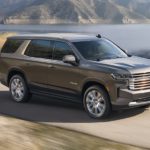The Chevy Tahoe and the GMC Yukon are both staples of the GM lineup of full-size SUVs. It’s hard to overlook either of these models, considering they are big, they are bold, and they are fully loaded with performance and comfort. Either make a worthy choice for drivers. When looking for a used Chevy Tahoe for sale, it’s almost impossible to miss the Yukon that is no doubt nearby like a shadow.
These king-sized SUVs were introduced in the early to mid-1990s to compete with other large SUVs like the Ford Expedition that popped up around the same time. However, unlike the Expedition, the Yukon and later the Tahoe were bigger and added more luxury features combined with beefy powertrains that helped GM dominate the full-size SUV market. Since their arrivals, both SUVs have seen plenty of facelifts, redesigns, and upgrades to improve handling, comfort, efficiency, and all-around performance. Today, they are still considered some of the most capable full-size SUVs on the market despite how the SUV market has exploded since the 90s.
Whether you’re shopping for a Chevy Tahoe or a GMC Yukon or you’re still trying to decide, learning about where these SUV models have been, how they’ve changed, and where GM hopes to take them are all ways to ensure you pick the perfect SUV for your needs.
The Origins of GM’s Dynamic Duo
The GM Yukon was introduced in 1992, several years before the Tahoe, so let’s start there. When the Yukon was first designed, it was a two-door model but would see an upgrade to a four-door option a few years later, in 1995. The Yukon was designed for maximum performance; after all, it was named the Yukon, for that harsh but beautiful expanse of wilderness that stretches across northern Canada.
Like most SUVs of the early 90s, the Yukon had a distinct shape, the boxy silhouette of a truck or wagon. When the Chevy Tahoe was introduced later in 1995, it was nearly identical in styling to the Yukon. Yet the Yukon was considered the more upscale option with features like heated seating and premium cabin materials. Though the first Chevy Tahoes weren’t considered luxury vehicles, they were seen as the perfect balance between a passenger van and a truck, making them affordable for the average family who needed more than a car or wagon. The Tahoe was built on a truck chassis, giving it advanced towing abilities and increased utility for drivers who wanted comfort and performance in a single vehicle. This great pairing made the Tahoe instantly popular with drivers across the board.
Increased Luxury for the Yukon
The Yukon was designed to be an SUV that wasn’t just tough but also added a touch of luxury to the large SUV market. Since its introduction, it has gained a reputation as a status symbol thanks to its high-end design and deluxe cabin. In 1997, the Yukon Denali introduced the public to what the ultimate luxury driving machine could be. It’s safe to say it was a game changer for the full-size SUV market. The Denali is a high-end trim level that is loaded with the best of the best. The Yukon was the first GM vehicle to sport the Denali trim name.
More Work Than Play
Though the first generation of the Tahoe shared much of the same components as the GM Yukon, it was still considered more of an off-roader or work vehicle than the Yukon. The Tahoe was boxy, offered as a two- or four-door vehicle, and a slightly smaller SUV than the Chevy Suburban. Its size and power made the Tahoe the preferred vehicle for those seeking practicality and convenience. The first generation of the Tahoe offered seating for five passengers; this would increase over the years as the model went through various updates.
A New Millenium, New SUVs
With the start of the 2000s, both SUVs entered their second generation, which saw significant updates to keep them relevant for drivers. For the Yukon, this meant transforming the full-size SUV into a modern machine with smoother lines outside and increased seating options inside. Consumers could pick up a new Yukon with optional first-row bucket seats or bench, adding to the seating flexibility of the vehicle.
Like its GMC counterpart, the Tahoe also underwent a redesign process to smooth out the SUV’s harsh lines. Yet the second-generation Tahoe didn’t lose its capable edge, taking styling cues from the Chevy Silverado rather than a wagon or van. Interior updates were done to keep the Tahoe competitive in the increasingly large SUV market. An Autoride system gave the Tahoe a best-in-class ride title for the new millennium. At the same time, the updated four-wheel drive system made the SUV’s tech more user-friendly for everyday drivers.
The Third Generation Grows Up
By 2007, the full-size SUV market wasn’t as popular as in previous years, thanks to the flood of new midsize SUVs. Yet somehow, the Yukon managed to stay on top of things when its third generation was released in 2007. The SUV was given an updated design with a new modern front fascia and a new platform. New angles and reshaped headlamps gave it an edge and set it apart from previous models. The Denali trim also saw major updates to keep it competitive in the luxury market. The rise of the infotainment system increased the tech options of the Yukon, which helped attract those looking for the latest and best technology for their next ride.
The Tahoe’s third generation began the same year, and Chevy was focused on refining the Tahoe inside and out. This generation seemed to shed its truck image and take on a more contemporary look. Chevy increased the luxury of the Tahoe as well as its performance, which were noted by journalists who compared it to that of a Cadillac. It was in 2009 that the Chevy Tahoe saw an increase in seating thanks to the addition of a third row of seats. This transformed the Chevy more into the SUV we know today rather than the five-seater from the 1990s. The move was huge for the Tahoe, increasing its flexibility for drivers.
The SUVs We Know and Love Today
The fourth generation kicked off in 2015 for both the Tahoe and the Yukon. These models are more recognizable than those from the 1990s or even the early 200os. The Yukon was given a major facelift, highlighting just how advanced the full-size SUV had become on every front. From its sleek styling to its advanced technology, the Yukon has become the picture of luxury for many full-size SUV drivers. A refined fuel economy met drivers’ desires for a fuel-efficient SUV, while the bold updated chrome grille gave them the upscale styling they loved. Extras like ambient lighting, an enhanced Bose sound system, and folding flat third-row seating are elements still seen in the latest Yukon models.
As for the Tahoe, this generation saw many updates that drivers are familiar with today. Keyless entry, wireless charging, and push-button start made the Tahoe a must-have for those shopping for a full-size SUV. Fuel efficiency on the Tahoe also increased thanks to its updated family of engines that gave drivers plenty of power combined with plenty of savings. The new interior gave the Tahoe modern sophistication much different from the rugged economy styling of its first few generations.
The Latest and Greatest Generation
We’re now in the fifth generation of full-size SUVs. Both the Tahoe and the Yukon are going strong. With many great features carried over from the previous generations, such as advanced tech and upscale styling, the GM full-size SUV family has even more to offer drivers than ever.
The GMC Yukon is bolder than ever, thanks to the upgraded Denali trim, which seeks to elevate the driver’s experience and comfort. New rich color palettes and real wood accents give the Yukon the right balance of modern and classic. The infotainment screen is user-friendly and makes connecting with the Yukon’s tech feel like second nature. A Rear-Seat Media System adds additional LCD touch screens for passengers. Drivers and passengers can use wireless tech with additional USB ports to connect their phones, iPads, or laptops to stream movies, check messages, or charge up while on the road. Though they have been updated over the years, the Yukon still sports powerful engine choices for drivers who want luxury and performance from their SUVs.
The Tahoe’s fifth generation aligns it even more with the Yukon, where comfort and technology are concerned. The interior is a modern driving machine with all the creature comforts and advanced tech a driver might want. This latest generation picks up where the previous one left off, building on its achievements and creating an iconic SUV that helps set the industry standard for performance and comfort. Its current styling is far from its Silverado-style roots, and if you didn’t know, you’d never guess the Tahoe was once modeled after Chevy’s best-selling pickup truck. The latest generation of Tahoe sports a best-in-class title for its cargo capabilities. But don’t think the Tahoe is any less powerful than it once was. Its beefy modern powertrains make the full-size SUV more than capable of great things. Check out this generation’s 3.0L diesel engine to get excellent fuel efficiency without cutting corners.
Stylish Function: Which SUV Is for You?
It can be tough to pick between the Chevy Tahoe and GMC Yukon. While the two models might have started at different ends of the spectrum—the Tahoe was more truck, and the Yukon focused on luxury—they have merged over the decades to provide some of the best riding experiences drivers could ask for from a full-size SUV.
The Yukon hits the sweet spot where luxury meets performance. The Chevy Tahoe has managed to go from a Silverado-inspired off-roader to an icon that sets the standard for full-size SUVs. Lots of performance and creature comforts combined with the newest technology make the latest Chevy Tahoe an unstoppable force in the large SUV market.
Drivers trying to decide should consider their needs, budget, and lifestyle to find the right SUV to accommodate them. If you want lots of power, the Yukon has your back, but fuel economy usually goes to the Tahoe. When it comes down to it, both SUVs are nearly evenly matched when it comes to standard comfort and technology. While it is tough to go wrong with a Yukon, the Chevy Tahoe is still very tempting thanks to its great updates and styling that help keep it ahead of the pack year after year.
